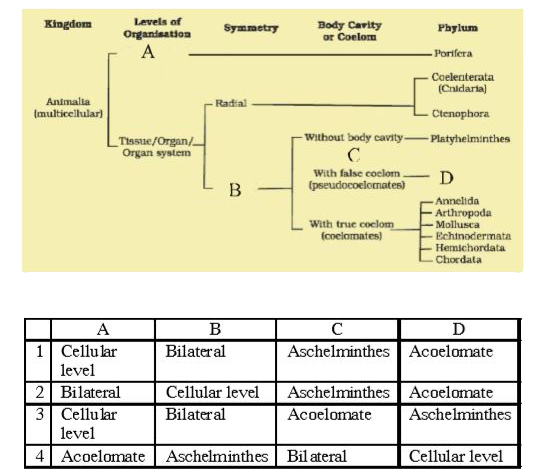A+NH4+BCGlatamate+H2O+D complete the above conversion with suitable option for A, B C and D.
A Glutamic, B FADH2, C Glutamate DEHYDROGENASE, D FAD
A Oxaloacetic, B NADPH, C Glutamate dehydrogenase, D NADP
A α-ketoglutaric acid, B NADPH, C Glutamate dehydrogenase, D NADP
A α-ketoglutaric acid, B NADPH, C Transaminase, D NADP
To complete the conversion given in the question, we can analyze the components involved in the reaction step by step.
1. Identify A: The reaction involves the addition of ammonia (NH4+) to a compound. In the context of amino acid synthesis, the compound that typically reacts with ammonia to form an amino acid is alpha-ketoglutaric acid. Therefore, A = Alpha-ketoglutaric acid.
2. Identify B: The reaction requires a reducing agent to facilitate the conversion. In biological systems, NADPH is commonly used as a reducing agent. Hence, B = NADPH.
3. Identify C: The enzyme that catalyzes the conversion of alpha-ketoglutaric acid and ammonia into glutamate is known as glutamate dehydrogenase. Therefore, C = Glutamate dehydrogenase.
4. Identify D: After the reaction, the products formed include glutamate, water, and NADP+. Since NADPH is oxidized to NADP+ during the reaction, D = NADP+.
Putting it all together, we have:
- A = Alpha-ketoglutaric acid
- B = NADPH
- C = Glutamate dehydrogenase
- D = NADP+
Final Answer:
- A: Alpha-ketoglutaric acid
- B: NADPH
- C: Glutamate dehydrogenase
- D: NADP+
- A = Alpha-ketoglutaric acid
- B = NADPH
- C = Glutamate dehydrogenase
- D = NADP+
- A: Alpha-ketoglutaric acid
- B: NADPH
- C: Glutamate dehydrogenase
- D: NADP+
Topper's Solved these Questions
Similar Questions
Knowledge Check
B U B D C E D B D E U B A D C B E A C D A E B A U A C D B C A C
If all A's are dropped from the above arrangement, which of the following will be eleventh from the right end of the above arrangementAEBCCDDUB U B D C E D B D E U B A D C B E A C D A E B A U A C D B C A C
Which of the following is the eighth to the left of the twentieth from the left end of the above arrangement?ACBECUDBB U B D C E D B D E U B A D C B E A C D A E B A U A C D B C A C
How many such consonants are there in the above arrangement 'each of which is immediately preceded by a vowel and also immediately followed by a consonantAOneBTwoCThreeDMore than four
In a parallelogram ABCD diagonals AC and BD intersect at O and AC=6.8 cm and BD=5.6cm . Find the measures of OC and OD
View SolutionThe diagonals of quadrilateral ABCD,ACandBD intersect in O. Prove that if BO=OD, the triangles ABCandADC are equal in area.
View SolutionIn the following equation :
A+2B+H2O→C+2D
A=HNO2,B=H2SO3,C=NH2OH
Identify D. Draw the structure of A,B,C and D.
View SolutionDiagonals AC and BD of a quadrilateral ABCD intersect at O in such a way that ar (AOD)=ar ( BOC). Prove that ABCD is a trapezium.
View SolutionIfAB=23,BC=45andCD=32, then what is the ratio of A:B:C:D ?
View Solution
